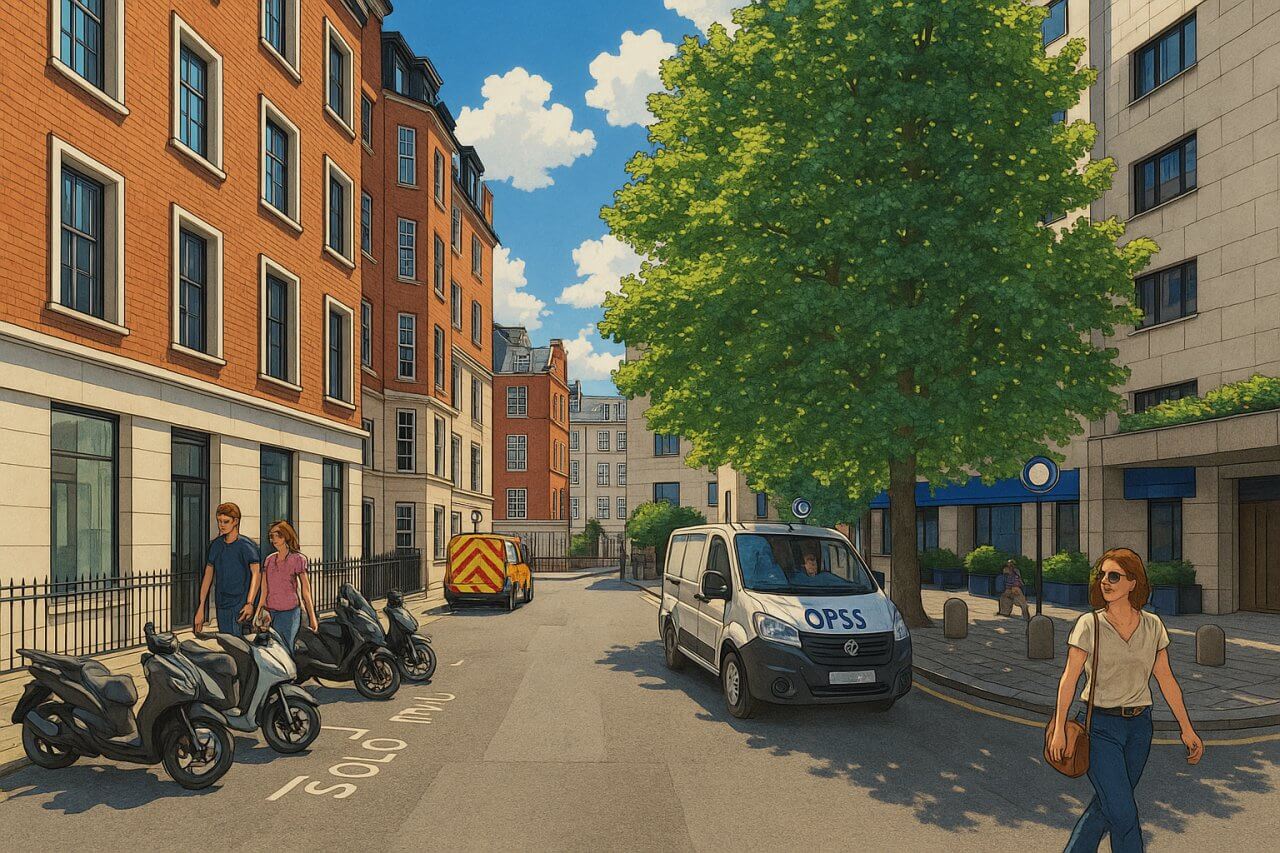
Arlington Street, London
Arlington Street is a short, prestigious street located in the elegant district of St James’s in the City of Westminster, London. Nestled just off Piccadilly, this discreet and historically rich cul-de-sac exudes a quiet sophistication, with stately buildings, private clubs, and residences that reflect the affluence and legacy of its surroundings.
Overview and Location
Arlington Street begins at its northern junction with Piccadilly and extends southward for approximately 130 metres (427 feet), forming a cul-de-sac at its southern end. Just before the end, Bennet Street joins it from the east in a T-junction formation. A narrow flight of stairs leads down from the southern tip of Arlington Street to Park Place, connecting pedestrians to the lower street level and towards Green Park.
The street allows for one-way vehicular traffic from north to south, with parking on either side. Traffic volume is minimal due to its cul-de-sac configuration, adding to its quiet and exclusive atmosphere.
Historical Background
Arlington Street dates back to the late 17th to early 18th century, a period when the surrounding district of St James’s was undergoing transformation from royal hunting grounds into one of London’s most desirable residential quarters. Much of the land was once part of the St James’s Field, gradually developed into grand townhouses and fashionable addresses for the aristocracy.
The street derives its name from Henry Bennet, 1st Earl of Arlington (c.1618–1685), a prominent statesman and Secretary of State under King Charles II. The naming was in honour of his influence and landholdings in the area. The pronunciation of Arlington is AR-ling-tuhn, transcribed in the International Phonetic Alphabet as /ˈɑː.lɪŋ.tən/. 
Character of the Street
Today, Arlington Street maintains a residential and institutional character, with a refined and reserved ambience. The buildings lining the street are mostly Grade II-listed structures, some of which have been converted into luxury flats or offices. Unlike the bustling commercial areas nearby, Arlington Street is quiet and rarely crowded, favoured by high-net-worth individuals seeking discretion and proximity to central London’s amenities.
Notable Sights and Nearby Attractions
Although Arlington Street itself is modest in length, it is within walking distance of several London landmarks:
- Green Park – a serene Royal Park located just beyond the end of the street via Park Place.
- The Ritz London – one of London’s most iconic luxury hotels, situated at the corner of Piccadilly and Arlington Street.
- St James’s Palace – a short walk to the south-west, the working royal residence built in the 16th century.
- Burlington Arcade and Royal Academy of Arts – located just across Piccadilly to the north.
The area is also home to private clubs, art galleries, and antique shops, adding to its refined cultural atmosphere.
Real Estate on Arlington Street
Properties on Arlington Street are among the most exclusive in central London, commanding premium prices reflective of their heritage, location, and discretion. As of 2025, residential flats here typically range between 1,200 to 2,500 sq ft (111 to 232 sq m). Prices for these properties start from £4 million, with larger or historically significant units exceeding £10 million1.
This is significantly higher than London’s average property price, which hovers around £700,000 for similar-sized properties1. The demand remains high due to the limited number of residences and the cachet of the St James’s address.
Transport Connections
Underground Stations
- Green Park Station – less than a 5-minute walk west, served by the Jubilee, Piccadilly, and Victoria lines.
- Piccadilly Circus Station – approximately 10 minutes away on foot, served by the Bakerloo and Piccadilly lines.
Bus Services
The nearest bus stops are located along Piccadilly. Routes passing through include:
- 9 (Hammersmith – Aldwych)
- 14 (Putney – Russell Square)
- 19 (Battersea – Finsbury Park)
- 38 (Victoria – Clapton Pond)
These services provide excellent connections to the West End, Kensington, Victoria, and the City of London.
Fun Fact
Arlington Street once hosted the famous Arlington House, a gentlemen’s residential club and hotel built in the 19th century. Known for its privacy and upper-class clientele, it housed notable figures including Sir Noël Coward and Sir Oswald Mosley. Though the building was later converted into private flats, the legacy of discreet luxury remains embedded in the street's identity.
Quick Facts
- Location: St James’s, City of Westminster, London
- Length: Approx. 130 metres (427 feet)
- Traffic: One-way, north to south, ends in a cul-de-sac
- Named after: Henry Bennet, 1st Earl of Arlington
- Pronunciation: AR-ling-tuhn /ˈɑː.lɪŋ.tən/
- Nearest Tube: Green Park (Jubilee, Piccadilly, Victoria)
- Bus Routes Nearby: 9, 14, 19, 38
- Average Property Size: 1,200–2,500 sq ft (111–232 sq m)
- Average Property Price (2025): £4M–£10M+
- Nearby Attractions: Green Park, The Ritz, Burlington Arcade
References
Map of Arlington Street, London

Painting of Arlington Street, London (View image in full size)